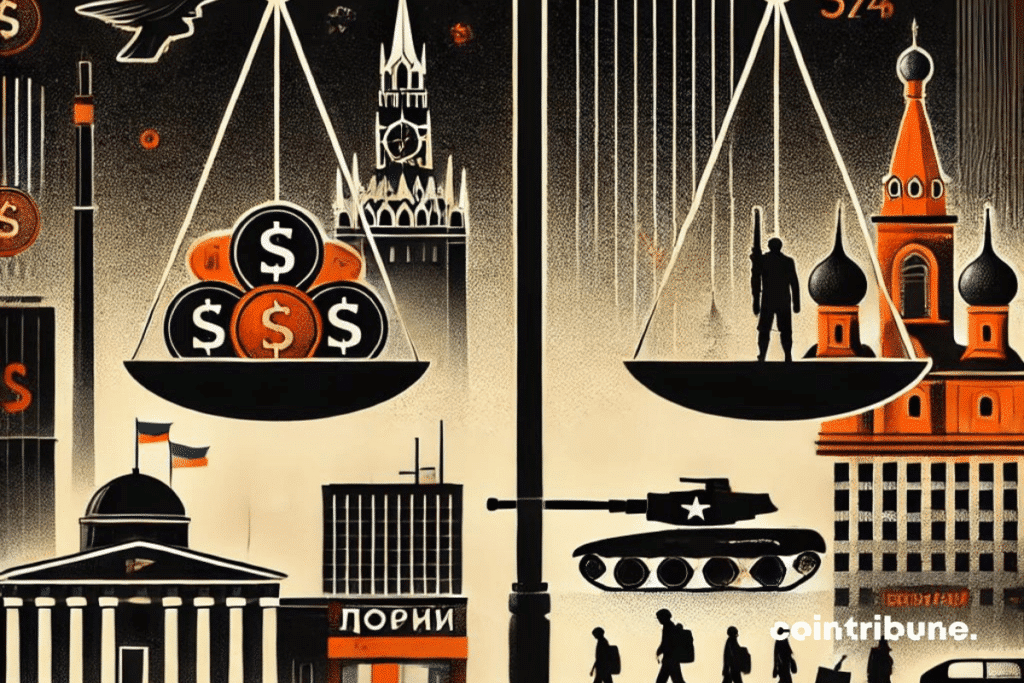The Russian economy on the brink of the abyss !
Russia faces a growing threat of stagflation as its economy slows under the weight of massive military spending and runaway inflation. With an inflation rate of 9 % in August 2024 and an economy marked by significant military expenditures since the invasion of Ukraine, experts are concerned about the long-term repercussions.

Rising inflation and the threat of stagflation
Russia faces a continual rise in prices, especially in basic consumer goods. Indeed, stagflation, which is the combination of stagnant growth and high inflation, is becoming an increasingly plausible reality for Russia. The government’s efforts to stimulate the economy through massive spending on the military and defense-related industries have contributed to this overheating. However, these same efforts are creating an inflationary spiral that heavily weighs on the non-military private sector.
To try to address the situation, the Central Bank of Russia, led by Elvira NABIOULLINA, announced yesterday, Friday, September 13, 2024, a new increase in its key rate to 19 %, after already raising it from 16 % to 18 % in July. This monetary tightening aims to counter the runaway inflation that threatens to further erode the purchasing power of Russians.
Aside from the immediate impact of inflation on the population, the exodus of Russian workers (mobilized or not) leaves millions of positions vacant. The industrial sector is also penalized by Western sanctions, including restricted access to critical technologies, which slows innovation and weakens supply chains.
An unsustainable economic model ?
Despite warnings from the Central Bank, Russia continues to militarize its economy on a large scale. Since the beginning of the war in Ukraine, military spending has increased by 50 %, which temporarily contributes to GDP growth. Wages have risen in defense-related sectors, and the unemployment rate is at its lowest in 15 years. However, this boom is far from widespread. International sanctions on Western technologies are hindering innovation and productivity in civilian sectors, thereby limiting the modernization of the Russian economy.
This growing dependence on the war effort and military funding raises questions about the sustainability of the current economic model. According to economist Maxim BOUEV, Russia is trapped in a vicious circle of inflation and military spending: “The stimulus goes to war, the rest of the economy suffers from rising prices.” In the long term, this situation could exacerbate the demodernization of the economy, already marked by a return to methods and standards inherited from the Soviet era. Even though Russia still has 300 billion dollars in reserves and a low debt rate, these resources will not indefinitely compensate for productivity losses.
In the short term, Russia seems capable of maintaining its war effort and containing the effects of sanctions thanks to its financial reserves and revenues from hydrocarbons. However, the threat of stagflation, combined with excessive militarization of the economy, portends an uncertain future.
Maximize your Cointribune experience with our "Read to Earn" program! For every article you read, earn points and access exclusive rewards. Sign up now and start earning benefits.
Diplômé de Sciences Po Toulouse et titulaire d'une certification consultant blockchain délivrée par Alyra, j'ai rejoint l'aventure Cointribune en 2019. Convaincu du potentiel de la blockchain pour transformer de nombreux secteurs de l'économie, j'ai pris l'engagement de sensibiliser et d'informer le grand public sur cet écosystème en constante évolution. Mon objectif est de permettre à chacun de mieux comprendre la blockchain et de saisir les opportunités qu'elle offre. Je m'efforce chaque jour de fournir une analyse objective de l'actualité, de décrypter les tendances du marché, de relayer les dernières innovations technologiques et de mettre en perspective les enjeux économiques et sociétaux de cette révolution en marche.
The views, thoughts, and opinions expressed in this article belong solely to the author, and should not be taken as investment advice. Do your own research before taking any investment decisions.